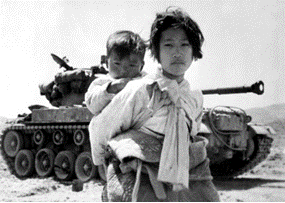About Lesson
Lesson 6: Aftermath of the Korean War: Korean Transnational Adoptions

States and metropolitan cities in the world where Korean adoptees adopted.
(Source: Wikipedia)
Lesson Features
-
- TOPICS: Korean War, Korean War orphans, Transnational adoptions
- HISTORICAL TIMEFRAME: 1950-1970
- SUMMATIVE ASSESSMENT: Comparison/Contrast Essay
Lesson Overview
-
- Students explore the ending and aftermath of the Korean War. They learn about the history of the Korean War and what war was like from the perspective of Koreans. Students learn about one of the many groups of displaced civilians whose lives were forever changed by the war, Korean children. They learn how Korean children became central to international aid efforts that led to the advent of transnational adoptions. They analyze an article from 1953 about a Korean transnational adoptee and consider the broader impacts of Korean transnational adoptions on Koreans and Korean-Americans. Finally, students learn about transnational adoptions from the perspective of Deann Borshay Liem, a Korean adoptee.
Timeframe
-
- There are three activities in this lesson. Each requires 55 minutes.
- The Summative Assessment comparison/contrast essay and web-based research on Korean transnational adoptions requires at least 55 minutes and homework.
Objectives and Learning Goals
-
- Students will be able to understand how the Korean War ended.
- Students will be able to research primary and secondary sources to analyze the experiences of Korean soldiers, civilians, and children during and after the war.
- Students will be able to identify causes and effects of how humanitarian outreach turned into a campaign for Americans to adopt Korean and mixed-race children, and explain how and why such transnational adoptions persist today.
- Students will be able to connect the historical origins of the Korean War to ongoing transnational adoptions from Korea.
- Students will be able to describe experiences of Korean transnational adoptees.
Vocabulary
-
- Armistice – an agreement made by opposing sides in a war to stop fighting for a certain time; a truce.
- Cold War – an ongoing political rivalry between the United States and the Soviet Union and their respective allies that developed after World War II. It was waged mainly on political, economic, and propaganda fronts and lasted until 1991.
- Korean War – conflict fought between North Korea and South Korea from 25 June 1950 to 27 July 1953. The war began on 25 June 1950 when North Korea invaded South Korea following clashes along the border and rebellions in South Korea. North Korea was supported by China and the Soviet Union while South Korea was supported by the United Nations, principally the United States. The fighting ended with an armistice on 27 July 1953.
- US-Korea Relations – commenced in 1950, when the United States helped establish the modern state of South Korea, also known as the Republic of Korea, and fought on its UN-sponsored side in the Korean War.
- Transnational Adoptions – International adoption, also referred to as inter-country adoption or transnational adoption, means a child who is born in one country is adopted by a family from another country.
Original Resource
-
- Woo, S. & Costa , V. (2022). Aftermath of the Korean War and Korean Transnational Adoptions. In G. Cho & V. Costa (Eds.). Korean American Ethnic Studies Curriculum: Teaching Resource Materials for K-12 Classrooms (pp.275-320). Consulate General of the Republic of Korea in Los Angeles.
Lesson 6 Presentation (PDF)
Lesson 6 Presentation Teacher’s Guide (PDF)
Download Lesson 6 Presentation (PPT)

